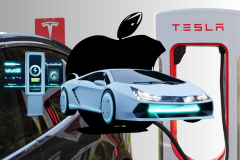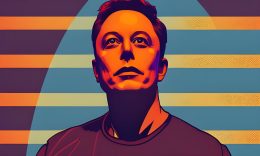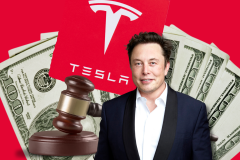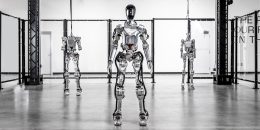All machines eventually break down. Self-driving vehicles are no exception.
Autonomous vehicles pose two problems for the future of vehicles. The removal of the driver means there is no person providing feedback on how the vehicle performs over time. You are removing the point-person who says “something feels wrong, this needs to be checked out.” An autonomous truck could easily arrive at its destination with one fewer wheels than it left with at its origin without recognizing there is a problem.
An autonomous truck could easily arrive at its destination with one fewer wheels than it left with at its origin without recognizing there is a problem.
See also: Automotive 2.0 – the new road ahead for autonomous vehicles
Autonomous vehicles also create a second maintenance problem – the sensor systems they use can fail. An autonomous vehicle operating with a faulty sensor is an on-the-road hazard. Imagine the wheel-speed sensor that reports the vehicle has stopped when it is actually traveling at highway speeds. A human would know to disregard that faulty input because it “feels” wrong. An autonomous vehicle could respond by continuously accelerating.
With the advent of autonomous vehicles, now, more than ever, systems need to be created for advanced diagnostics. AI should not just be used to make vehicles drive autonomously, but also to allow vehicles self-diagnose future and upcoming issues.
The new AI for maintenance
The concept of predicting breakdowns is nothing new. People have been using statistics for decades to calculate mean-time-to-failure – it is how the automotive industry came up with replacing parts based on number of miles driven. However, the ‘mean-time’ means that some parts repaired will have significant useful life yet and others will break before you get around to fixing them. AI allows something to be done that was unfeasible in the past – actively monitor every vehicle while it is in use.
Established companies have been working in this place for a while now. They operate on the notion that if you have been collecting data then they can put enough experts on the problem to create a solution. SAP, IBM, and Pivotal Labs are all making plays into the space. The problem is that they require that a company has been collecting data, knew what data to take, and knew to keep it.
As the industry matures and companies collect more data and gain large historical datasets, their solutions will be powerful. But nimble startups can use speed to their advantage in this situation by rapidly deploying a solution that will give them a permanent head start on collecting the sensor data needed to train the AI systems.
One such company is Uptake. They have had phenomenal growth, breaking a $1 billion dollar valuation within a year of incorporation and being named Forbes’ 2015 Hottest Startup. They did this by collecting a dataset from scratch, first with locomotives and then with other vehicles, through this they ended up with a partnership with Caterpillar. Their future looks to be diverging away from vehicles and towards bringing predictive maintenance to other industries.
Preteckt follows Uptakes footsteps in collecting its own dataset, but it targets the vehicles that are more commonly seen on the roads. Preteckt started with 18-wheelers and has already diversified into buses, and the hardware and software architecture that has been developed is portable to smaller vehicles. Preteckt’s technology has already been deployed in an autonomous truck and could be migrated to autonomous cars in the future.
The future is not “Star Trek”
Science fiction has people asking machines to run diagnostics to see if something is wrong, or what is wrong. The concept is flawed. The machines will know before you ask and will tell you what will go wrong with them next. They will tell you how to best take care of them to ensure that they do not fail on you. This is what you can look forward to with the autonomous vehicles of the future – a peace of mind in that your vehicle will not have any on-the-road surprises for you.
But why stop at eliminating surprises. Once vehicles can know their upcoming maintenance needs and drive themselves – why won’t they just take themselves to the mechanic when your schedule says you don’t need it. Maintenance will become an “out-of-sight, out-of-mind” concept making the ownership of a vehicle that much more enjoyable.
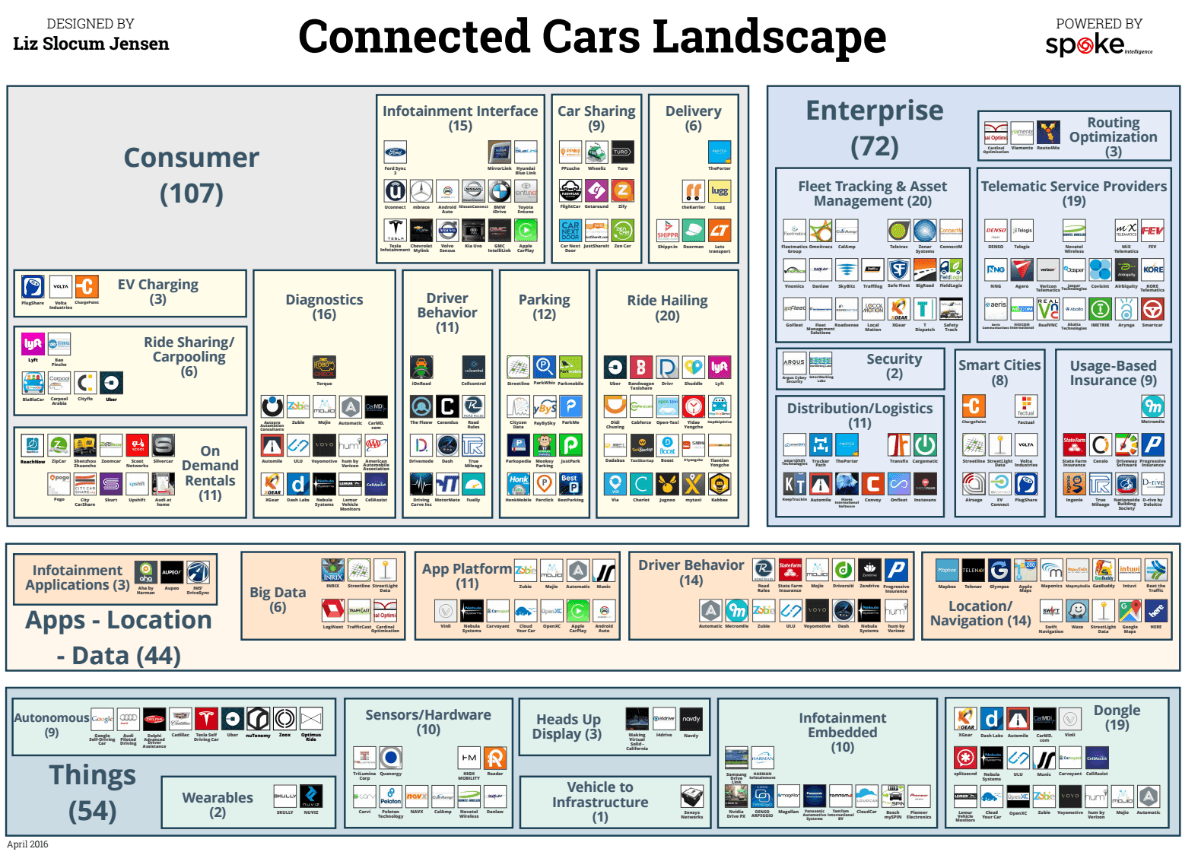
This article is part of our connected cars series. You can download a high-resolution version of the landscape featuring 250 companies here.

